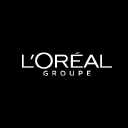How Might L’Oreal’s Focus On The African Markets Impact The Company?
L’Oreal, the global beauty leader, has always been a forerunner in the beauty arena, be it launching innovative products, introducing new technologies, or the expansion in erstwhile unexplored markets. Towards that end, L’Oreal’s new initiatives to cater to the African beauty market seems to be yet another move that might significantly boost L’Oreal’s future growth prospects. According to a Bloomberg report, L’Oreal is testing formulations in its new R&D Center in Johannesburg, South Africa, in order to offer new products to the African beauty market.
The reason why the success of these efforts might be beneficial for L’Oreal are as follows:
- African consumers still have limited choices available for their hair care needs as most of the options are expensive, time consuming, or painful. If L’Oreal can launch products that address these issues, it will definitely gain the first-mover advantage as no global company has any such products in the market yet.
- According to the company’s estimates, the African beauty market currently comprises of around 100 million middle class consumers and these have a significant potential for greater growth with the rising workforce among women.
- Instead of just offering brands that the company produces for African consumers in the U.S., L’Oreal wants to develop products in the local markets and this might give it a significant competitive advantage over its peers that do not currently have local products. African women’s hair come with a specific set of challenges, they are generally more fragile, pose more difficulty to manage, and they grow at a slower rate.
- Though in most parts of the world, L’Oreal is the market leader with its diverse range of products ranging from drugstore cosmetics to luxury beauty, it lags behind companies such as Unilever, Avon, and P&G in the two largest African markets, Nigeria and South Africa. Additionally, the local hair care products already own around two-thirds of the market share in this region. Hence, introducing breakthrough products at affordable prices seem to be the best strategy for the company to gain a strong foothold in Africa. To give a context, the total value of beauty and personal care sales in 2016 in these two markets amounted to $5 billion and hair care was one of the segments that grew most rapidly.
We currently expect L’Oreal’s market share in the global haircare market to expand from around 20% to over 22% by the end of our forecast period and its EBITDA margin for haircare to remain almost flat at ~22% during the same period. However, if L’Oreal’s initiatives are successful in Africa, then both its market share and EBITDA for hair care can rise significantly in the future, given the great potential in the African markets. Consequently, our stock price estimate for the company can experience a significant upward surge due to the same factors.
Editor’s Note: We care deeply about your inputs, and want to ensure our content is increasingly more useful to you. Please let us know what/why you liked or disliked in this article, and importantly, alternative analyses you want to see. Drop us a line at content@trefis.com
- Is There More Room For Growth In L’Oreal Stock?
- After Underperforming The Markets, Can L’Oreal Stock Rally?
- L’Oreal Stock Poised For Bounce Back After Rough Month?
- After Dismal Performance Last Month, L’Oreal Stock Looks Set To Rebound
- L’Oreal Stock Looks Set For A Rally On The Back Of Strong Earnings Growth
- Forecast Of The Day: L’Oreal Makeup Revenues
Notes:
